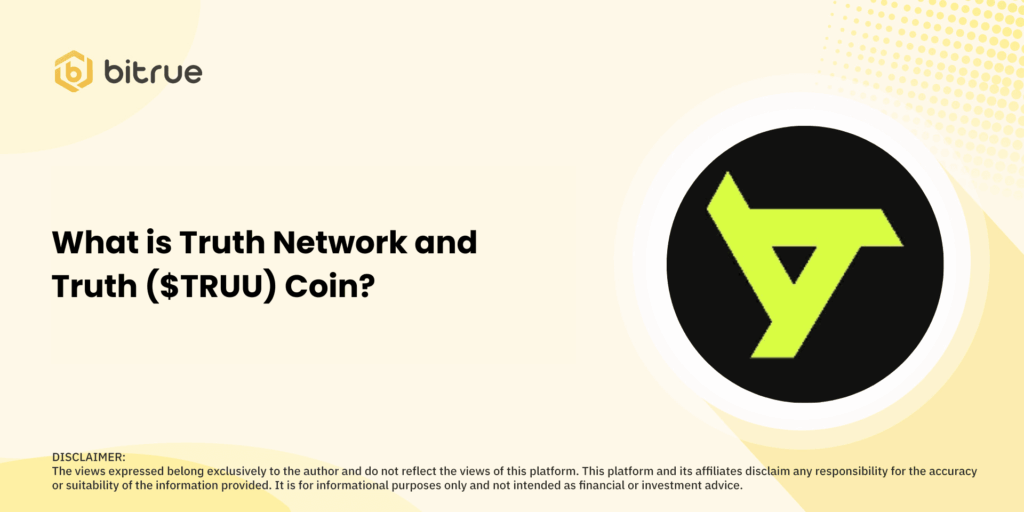Recent Blog
Insert some promo here!
Add some sample promo here

What is Truth Network and Truth ($TRUU) Coin?
In a digital economy increasingly driven by speculation, the Truth Network proposes a bold reconfiguration of how predictions are validated, verified, and trusted.
As a decentralized prediction market ecosystem, Truth Network distinguishes itself through an ambitious infrastructure: a vast node-based consensus mechanism supported by the security of the Polkadot ecosystem and operational flexibility of the Aventus appchain.
Though still in its pre-mainnet phase, scheduled for full launch in March 2025, Truth Network already carries significant implications for the future of trustless forecasting and outcome validation in decentralized environments.
The Architecture Behind Truth Network
At its core, Truth Network functions as a Web3-native prediction oracle, enabling participants to submit predictions across various domains—politics, finance, sports, and beyond.
Rather than relying on a central authority or third-party verification, Truth leverages a robust, large-scale validator system composed of over 50,000 decentralized nodes.
These nodes are tasked with processing and verifying outcomes, using economic incentives and disincentives to ensure honesty and integrity.
Key mechanisms embedded within this structure include:
- Tamper-proof consensus through decentralized validation.
- An incentive-driven reward/penalty system that promotes accurate result submission.
- Self-regulating governance, with participants shaping platform policies via token-weighted voting.
The result is a system designed to eliminate manipulation, foster community alignment, and establish a foundation for verifiable digital consensus.
The Role of TRUU: A Token Built for Trust
The utility token TRUU underpins the operational dynamics of the Truth Network. While the network itself runs on an appchain secured by Polkadot, the TRUU token is issued on Ethereum, bridging decentralized infrastructure with wider liquidity access across DeFi platforms.
Core Utilities of TRUU Include:
- Validator Incentivization – TRUU is distributed as a reward to nodes that validate outcomes honestly.
- Governance Participation – Token holders wield influence in network proposals and development directions.
- Staking & Slashing – Tokens can be staked for validation privileges, while dishonest activity incurs penalties, ensuring that only good actors maintain influence within the ecosystem.
- Transaction Facilitation – TRUU is used to pay for network-related operations, creating an internal economic loop that reinforces participation.
With a total supply capped at 100 billion, the token has seen a wide distribution, with full supply already in circulation, suggesting a lack of centralized control and minimal risk of future dilution.
Read more: How to Use Ethos Network, and How Ethos Works
TRUU Market Performance Snapshot (as of May 19, 2025)
- Price: $0.002767
- Market Capitalization: ~$276.72 million
- 24h Trading Volume: ~$1.02 million
- All-Time High: $0.003925 (Feb 17, 2025)
- All-Time Low: $0.0004586 (Feb 10, 2025)
TRUU’s sharp ascent and market consolidation over recent months indicate early speculative interest, though its long-term value will be tied to the performance and adoption of the mainnet.
Read more: What is Ethos Network? Creating a More Trusted Web3
How Truth Network Redefines Prediction Markets
Prediction markets have long struggled with centralization, bias, and opaque result validation. Truth Network’s decentralized consensus framework and vast node distribution offer a substantial upgrade over legacy platforms.
By prioritizing algorithmic trust over human gatekeeping, the system could pave the way for an era of crowd-validated knowledge and transparent forecasting.
Where most existing systems depend on moderators or appointed “experts” to settle event outcomes, Truth Network democratizes the process—distributing the power of truth to a global node economy.
Final Thoughts
Truth Network emerges as an audacious response to the need for unbiased, decentralized validation in prediction markets.
Through technical rigor, a large-scale consensus model, and cross-chain integration, it positions itself as a transformative layer in the digital truth economy.
Whether it can sustain its momentum post-mainnet remains to be seen—but its architectural vision is already turning heads in the blockchain space.
FAQ
1. Is Truth Network currently operational?
Not yet. The platform’s mainnet launch is set for March 2025, marking the transition from development to live deployment.
2. What blockchain does it use?
Truth Network runs on an Aventus-based appchain, secured by Polkadot, while the TRUU token is native to Ethereum, allowing broader interoperability.
3. How are outcomes validated on Truth Network?
Through a massive decentralized consensus layer involving 50,000+ nodes. Honest validators are rewarded in TRUU; dishonest behavior results in penalties or slashing.
4. What can TRUU tokens be used for?
TRUU powers the platform’s economy—it enables staking, governance voting, validator rewards, and transaction processing across the network.
5. Is TRUU a safe investment?
While the platform shows technological promise, TRUU remains a speculative asset. As with any Web3 project in its early phase, prospective investors should carefully evaluate risks, utility adoption, and roadmap execution before engaging.




